Final Destination Bloodlines: A Franchise Reboot To Die For
This is #CineFile, where our critic Rahul Desai goes beyond the obvious takes, to dissect movies and shows that are in the news.
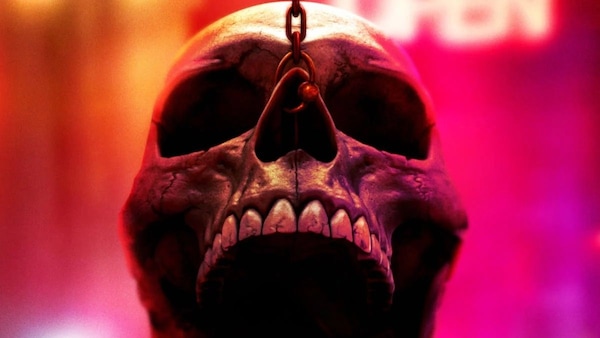
Last Updated: 09.04 PM, May 15, 2025
IT’S A STRANGE WEEK to be a Hollywood nerd. I binge-watched all the seven Mission: Impossible movies in anticipation of The Final Reckoning. Psychologically, this made me feel invincible — I almost found myself walking into oncoming traffic on a Mumbai highway (the potholes slowed down the cars, but never mind), convinced that I’d Ethan-Hunt my way out of danger. Nothing could kill me; I felt braver every time I risked my life to reach a place. Then I speed-watched the five Final Destination movies in anticipation of the sixth, Final Destination Bloodlines, which is more of a reboot but never mind. Just to get into the spirit of things. Psychologically, this made me feel extremely killable. On one hand, the M:I movies injected blind courage into me, but on the other, my mind was suddenly wired to obsess about a million gruesome ways I could perish the moment I walked out my front door. Was I fearless or scared sh*tless? I don’t know anymore. Maybe it’s the same thing.
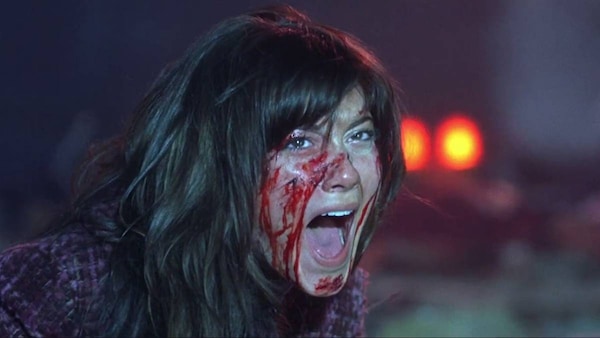
Final Destination Bloodlines — the first FD movie since 2011 — retains the tropes that generated a cult-like fandom of the horror franchise. The eerie premonitions. The morbidly imaginative, grotesque and freakish ‘accidents’. The suspenseful shot-taking and red herrings that toy with audiences. The futile heroism and survival instincts. The perverse disregard for human flesh, shock and grief. The simplicity of doom and destruction. And most of all, Death as both villain and hero at once. The central theme — that death itself will hunt down those who try to resist their preordained fates — subverts the moral identity of a quintessential horror movie. Death is that invisible demon or ghost or creature here, except it reframes murder as misfortune and bloodlust as destiny. The clincher is that nobody is actually doing the killing, so it’s easy to ‘empathise’ with death as more of a blue-collar worker who’s just doing its job. That’s the American dream.
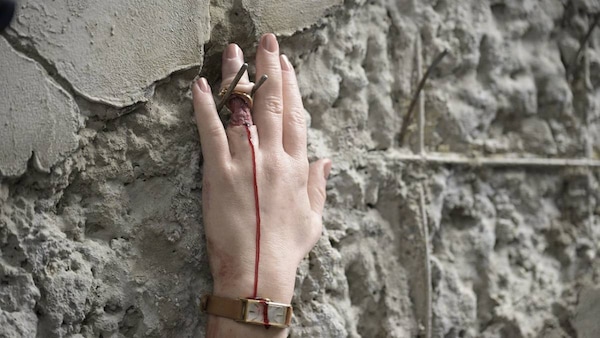
Hearing viewers cheer the most grisly crashes and mishaps on screen can be unnerving, but a lot of the ‘enjoyment’ is derived from how these movies adhere to no narrative structure and no playbook. Abruptness is its love language. No matter how good or bad a person is, they can be squashed to pulp moments later. If a person behaves like they aren’t going to die, they will. There is no pattern of bumping anyone off. We are led to follow arcs and protagonists and desperate ploys, but it’s inevitably a zero sum game — this audacity of a franchise to reverse the rules of engagement with a genre is hard to resist. If anything, it rewards us to expect the unexpected and disregard any personality cliche we think we know.
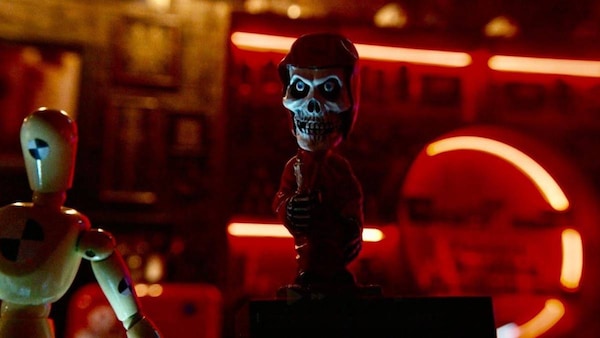
What Bloodlines does cleverly is tease the viewer into caring for these future ‘victims’ so that the deaths feel louder and cruder. It has a surprisingly personal setup. A young lady survives an incredibly creative disaster (involving a Sky Tower Restaurant) in the 1960s. Naturally, she wasn’t supposed to. Six decades later, the college-going grand-daughter, Stefani, is haunted by nightmares of that set piece. She has inherited the trauma of that day. She has a large extended family in the neighbourhood — a father, brother, three cousins, an uncle and aunt. Stef’s mother and grandmother abandoned the family early on to live a reclusive life on the fringes; nobody likes to mention them. Stef sets out to meet her estranged grandmother, a ‘cuckoo’ old woman who now lives in a fortified house in the wilderness. Once the mother too returns, it emerges that the two women had in fact abandoned everyone to protect them. This entire family was not supposed to exist after the 1960s, and death would only reach them after going through the old woman. She single-handedly kept it at bay for decades by shutting herself away.
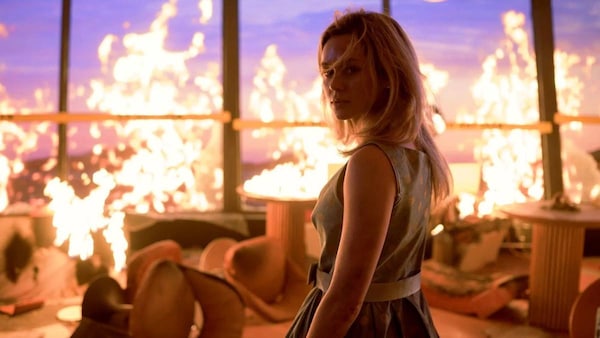
It’s an oddly poignant act of madness — the outliers of the family are females who sacrificed their entire lives and sanity to stop death from reaching their loved ones. This little plot forces us to invest in their survival a little more than usual, the silly-smart metaphors about mental illness and social stigmas notwithstanding. Death is not just outsmarting them, it’s trying to outsmart us. Stefani and her younger brother are the last in this family tree, so they have more time to make sense of the path and make the others more self-aware. That’s where Bloodlines is more grown-up than its predecessors — it’s more of a horror comedy than an all-out supernatural horror film, because it chooses to highlight the humour and irony in the cat-and-mouse game between the humans and their ghastly fates. At one point, the film messes with us by staging a cruel near-death experience for a brash cousin at his tattoo parlour (imagine the possibilities; it’s worse) only for him to be revealed as an illegitimate son scenes later. That means he was never on the ‘hit list,’ but the film follows Stefani’s reading and devises a fakeout to end all fakeouts.

In other words, this is a Final Destination movie and a parody of a Final Destination movie at once. The ‘bloodline’ succumbs, one by one, despite having a literal book (compiled by the grandmother) as a cheat code. Every time the humans think they’ve done enough, there’s a technical flaw or two. It’s wicked writing and borderline-deranged filmmaking — what’s not to love? I also found it fascinating to see the reactions of the people in the cinema hall around me. This is likely the only franchise where fans root for carnage and cosmic defeat. But it’s worth noting that Bloodlines is the first post-pandemic entry in this series. Which means it unfolds in a world where our relationship with death is irrevocably altered. The relationship is now a toxic situationship. When we watch fictional characters suffer the most horrific accidents on screen, it’s almost a bit empowering and cathartic because, at some weird level, we are reclaiming the sheer randomness of dying from the slow-burning certainty of a disease. It feels like a bizarre reminder that death is, and will always be, the most democratic of human conditions; it’s as if normal balance has been restored after years of distrusting people in contagious environments.
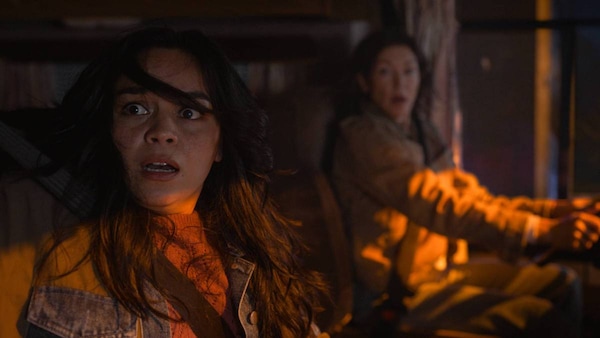
Another reason why a franchise like this is bound to thrive is because its design inherently caters to the TikTok attention spans, attachment issues and diminishing emotional bandwidth of newer generations. The absence of a protagonist, or the fleeting presence of anyone in these films, appeals to the average viewer looking for instant gratification and dopamine kicks. There’s no time to connect with a face or mourn the loss of a seemingly nice guy because everything is about what happens next. It’s like breaking up prematurely with every character and moving onto the subsequent one while staying adequately detached — a polyamorous, restless approach towards processing stories.

Final Destination Bloodlines doesn’t need to bother with the void that its deaths leave behind, because the majority of its viewers aren’t conditioned to acknowledge the real-world toll of living. It can afford to be funny and fast about it, but it can also afford to be an indictment of the audience it so skillfully entertains. While heading home in an autorickshaw after the screening, I thought about how terrifying it would be if a bus toppled onto us or a stray livewire from the metro above somehow electrocuted me while I crossed a puddle that a tanker caused. More terrifying, however, was the prospect of people laughing at how hideously and unfortunately I die…before waiting for the next incident. I was just one of those people. Forget desensitisation to gore, it’s the desensitisation to humanity itself that Final Destination continues to expose.
